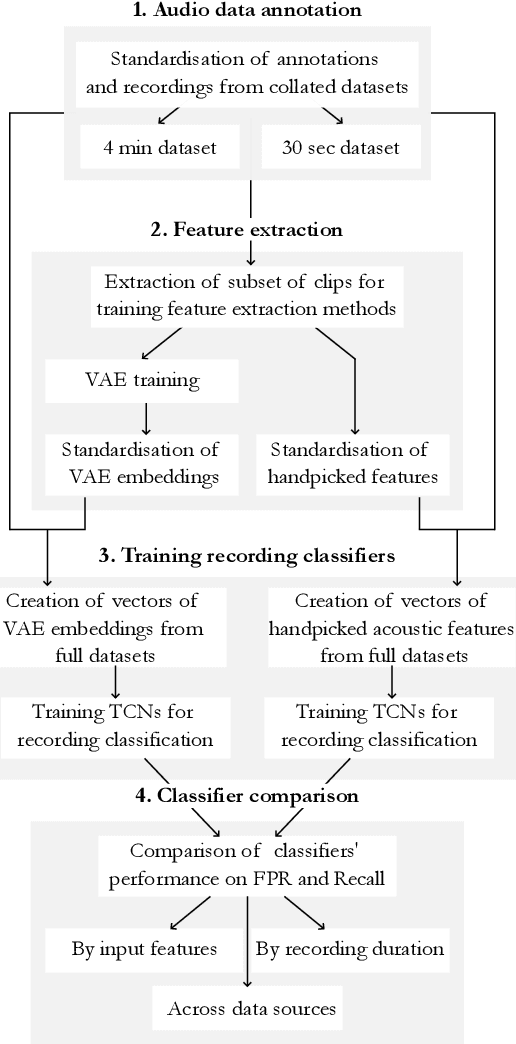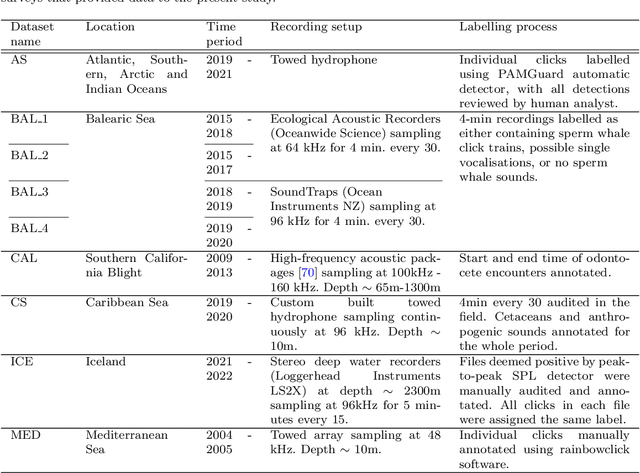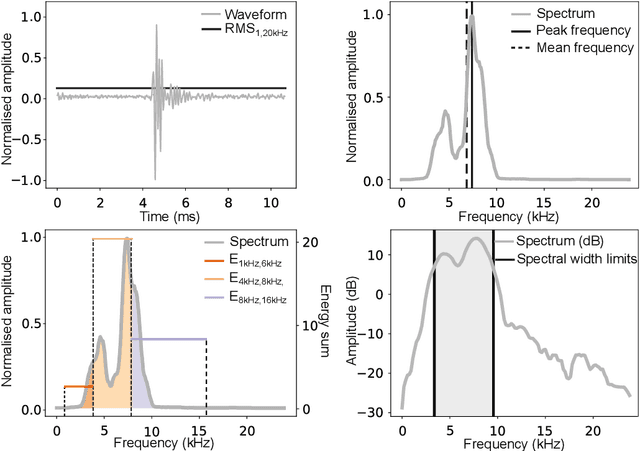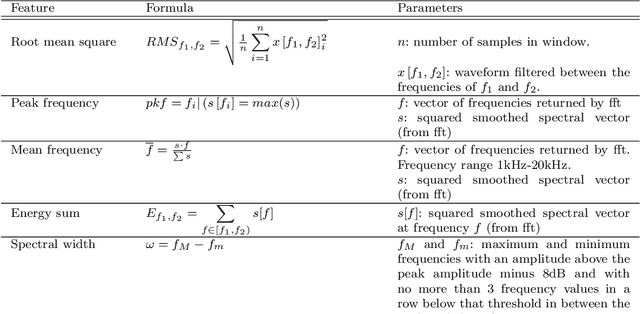Luke Rendell
Variational autoencoders stabilise TCN performance when classifying weakly labelled bioacoustics data
Oct 22, 2024



Abstract:Passive acoustic monitoring (PAM) data is often weakly labelled, audited at the scale of detection presence or absence on timescales of minutes to hours. Moreover, this data exhibits great variability from one deployment to the next, due to differences in ambient noise and the signals across sources and geographies. This study proposes a two-step solution to leverage weakly annotated data for training Deep Learning (DL) detection models. Our case study involves binary classification of the presence/absence of sperm whale (\textit{Physeter macrocephalus}) click trains in 4-minute-long recordings from a dataset comprising diverse sources and deployment conditions to maximise generalisability. We tested methods for extracting acoustic features from lengthy audio segments and integrated Temporal Convolutional Networks (TCNs) trained on the extracted features for sequence classification. For feature extraction, we introduced a new approach using Variational AutoEncoders (VAEs) to extract information from both waveforms and spectrograms, which eliminates the necessity for manual threshold setting or time-consuming strong labelling. For classification, TCNs were trained separately on sequences of either VAE embeddings or handpicked acoustic features extracted from the waveform and spectrogram representations using classical methods, to compare the efficacy of the two approaches. The TCN demonstrated robust classification capabilities on a validation set, achieving accuracies exceeding 85\% when applied to 4-minute acoustic recordings. Notably, TCNs trained on handpicked acoustic features exhibited greater variability in performance across recordings from diverse deployment conditions, whereas those trained on VAEs showed a more consistent performance, highlighting the robust transferability of VAEs for feature extraction across different deployment conditions.
 Add to Chrome
Add to Chrome Add to Firefox
Add to Firefox Add to Edge
Add to Edge